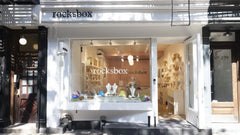
Walmart Trials Dark Stores to Enhance Delivery Speed
Table of Contents
- Key Highlights
- Introduction
- The Concept of Dark Stores
- Walmart's Current Initiatives
- Historical Context
- The Competitive Landscape
- Implications for Consumers and Retailers
- Challenges Ahead
- Looking Forward
- FAQ
Key Highlights
- Walmart is testing dark stores, which are warehouses closed to the public, to improve delivery efficiency in urban areas.
- The company has opened a dark store in Dallas and plans to establish additional locations, including Bentonville, Arkansas.
- This initiative aims to meet increasing consumer demand for faster deliveries and better service, particularly post-pandemic.
Introduction
As the e-commerce landscape evolves, the demand for rapid delivery has never been more pronounced. A staggering 71% of consumers now expect same-day delivery for their online purchases, according to a recent survey by McKinsey & Company. In response to this shifting consumer expectation, Walmart is testing the use of dark stores—warehouses that cater exclusively to online orders, bypassing traditional retail operations. This strategic move not only reflects the growing emphasis on logistics in retail but also signals a significant shift in how companies view their delivery infrastructure. As Walmart embarks on this venture, the implications for the retail sector could be considerable.
The Concept of Dark Stores
Dark stores have emerged as a modern solution to the challenges posed by e-commerce logistics. These facilities are designed specifically for online order fulfillment, stocked with high-demand items yet closed to the public. The concept is not entirely new; Walmart explored similar initiatives in the mid-2010s but scaled back operations during the pandemic. However, the resurgence of interest in dark stores reflects changing consumer behaviors and expectations in a post-pandemic world.
Why Dark Stores?
- Faster Delivery: By situating dark stores in urban areas, retailers can significantly reduce delivery times. Walmart aims to enhance its ability to deliver to 95% of Americans within three hours by year-end.
- Efficient Logistics: Dark stores allow for better inventory management and order batching, improving overall delivery efficiency.
- Cost-Effectiveness: In a market where delivery is increasingly seen as a competitive differentiator, leveraging dark stores can lead to significant cost savings in logistics.
Walmart's Current Initiatives
Walmart's testing of dark stores began with the opening of a facility in Dallas, with plans for more locations, including one in Bentonville, Arkansas. According to reports, these facilities will help Walmart enhance its delivery capabilities, aligning with its strategic goal of increasing the speed and convenience of service for customers.
Insights from Walmart Executives
Walmart's Chief Financial Officer, John David Rainey, highlighted in a recent earnings call that the company has seen a 20% increase in orders per delivery due to improved batch density. Additionally, over 30% of orders are now coming from customers opting for expedited delivery, indicating a robust demand for faster service.
Walmart's President and CEO, Doug McMillon, emphasized in his annual letter to shareholders the company’s commitment to investing in technology to support its supply chain and e-commerce operations. This investment is crucial as the company aims to adapt to the evolving retail landscape, where speed and customer convenience are paramount.
Historical Context
Walmart's foray into dark stores is part of a broader trend in retail logistics that has gained momentum over the last decade. Initially, the focus was on brick-and-mortar expansion, but the rise of e-commerce has necessitated a pivot towards more agile and efficient fulfillment strategies. The pandemic accelerated this shift, with many retailers forced to adapt quickly to changing consumer behaviors.
The Shift in Delivery Perception
Historically viewed as a cost center, delivery logistics are increasingly recognized as a pivotal competitive advantage. A report by PYMNTS indicates that companies are now focusing on logistics as a means to differentiate themselves in a crowded marketplace. This shift has prompted major players, including Walmart and Amazon, to invest heavily in their delivery infrastructures.
The Competitive Landscape
Walmart's entrance into the dark store model places it in direct competition with other major retailers, particularly Amazon, which has long leveraged its extensive warehouse network to ensure quick delivery times. As both companies race to dominate the last-mile delivery segment, consumers stand to benefit from improved service levels and lower shipping costs.
Innovations Driving Change
Walmart’s plans aren't solely focused on dark stores. The company has also been expanding its centralized prescription fulfillment facilities, utilizing automation to streamline operations. This move allows pharmacists to focus more on clinical services, enhancing customer care across all facets of the business.
Implications for Consumers and Retailers
The introduction of dark stores is likely to benefit consumers through increased availability of products, faster delivery times, and potentially lower prices due to improved efficiencies. For retailers, the challenge lies in adapting to this new operational model while maintaining a strong focus on customer service and satisfaction.
Case Study: Urban Delivery Models
Several retailers have successfully implemented dark store models to enhance their delivery capabilities. For example, companies like Kroger and Target have experimented with similar setups, utilizing urban warehouse spaces to meet local demand efficiently. These case studies illustrate the potential for dark stores to transform the retail landscape, particularly in densely populated areas.
Challenges Ahead
While the dark store model presents numerous opportunities, it is not without challenges. Logistics costs, supply chain disruptions, and the need for advanced technology to manage these operations effectively are key hurdles that Walmart and other retailers will need to navigate. Additionally, as competition intensifies, maintaining customer loyalty will require continuous innovation and adaptation.
Consumer Concerns
As retailers embrace new delivery models, some consumers may have reservations about the impact on local stores and the environment. The closure of retail spaces to create dark stores could lead to reduced foot traffic in traditional shopping areas and raise concerns about the sustainability of increased delivery operations.
Looking Forward
Walmart's testing of dark stores signifies a pivotal moment in the evolution of retail logistics. As the company refines its approach to e-commerce fulfillment, the potential ripple effects could reshape consumer expectations and the competitive landscape of retail. With ongoing investments in technology and infrastructure, Walmart is poised to enhance its service offerings significantly.
FAQ
What are dark stores?
Dark stores are warehouses that are closed to the public and are specifically used for fulfilling online orders. They allow retailers to store popular items and expedite delivery to customers.
Why is Walmart testing dark stores?
Walmart is testing dark stores to improve delivery speed and efficiency, catering to the growing consumer demand for fast service, especially following the pandemic.
How do dark stores benefit consumers?
Dark stores can lead to faster delivery times, better product availability, and potentially lower prices due to improved operational efficiencies.
Are dark stores a new concept?
No, dark stores have been explored by various retailers in the past, but their implementation has gained renewed interest due to changing consumer behaviors and the rise of e-commerce.
What challenges do retailers face with dark stores?
Retailers must navigate logistical challenges, manage supply chain disruptions, and address consumer concerns about the impact on traditional retail spaces and environmental sustainability.
In summary, Walmart's exploration of dark stores is not just a tactical response to market demands but a strategic initiative that could redefine the retail landscape. As this model gains traction, stakeholders across the industry will be keenly observing its implications on consumer behavior and competitive dynamics.
Tehosta verkkokauppaasi viikoittaisilla näkemyksillämme ja päivityksillämme!
Pysy ajan tasalla siitä, mitä kaupankäynnin maailmassa tapahtuu
Sähköpostiosoite
Valittu sinulle
25 June 2025 / Blog
Guide Dogs Launches Accessible Beauty Guidelines to Break Barriers for Australians with Disabilities
Lue lisää
25 June 2025 / Blog
Forrester’s Total Experience Score: Bridging Customer Experience and Business Success
Lue lisää
25 June 2025 / Blog
